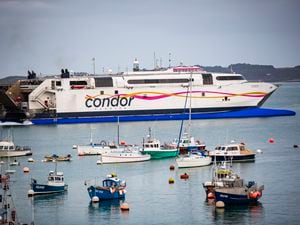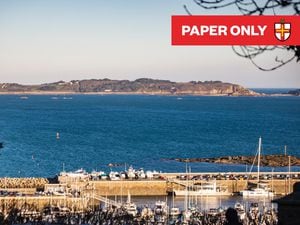Island under invasion threat from non-native species
GUERNSEY faces imminent invasion by land, sea and air as non-native species encroach on the Bailiwick.
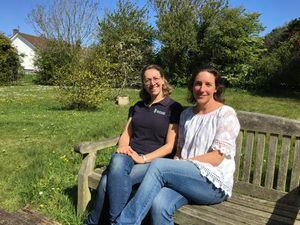
Following a so-far successful campaign to stop Asian hornets from becoming established, a list has been drawn up of invasive species that also need to be kept out.
These have all been identified as posing a threat of invasion, either by deliberate or accidental importation or under their own steam.
They have also been assessed as being likely to become established and as being potentially harmful to the environment, to the economy or to public health.
The list includes plants such as giant hogweed, rhododendron and yellow azalea, mammals such as black rats, grey squirrels and raccoons, and insects including the Asian tiger mosquito, the red-necked longhorn beetle and the emerald ash borer.
Marine species identified include the American lobster, the purple acorn barnacle and the carpet sea squirt, also known as sea vomit.
Rose-ringed parakeets, eagle owls and black swans are among the birds on the list.
Of the 113 species included, 84 are now banned from importation.
The other 29 are plants. These cannot be banned under current legislation but the States will now ‘encourage the removal of the relevant species from sale or distribution’.
They will also be the subject of surveillance at the ports.
The new policy on invasive non-native species (Inns) is part of the Strategy For Nature, which was approved by the States during the last political term, as part of the 2020-2050 Climate Change Policy and Action Plan. This has already been adopted by planners, to be considered when approving or rejecting planning applications.
Biodiversity officer Julia Henney said the Inns list focused on prevention.
‘This is about looking at what isn’t already here that’s on the horizon,’ she said. ‘It’s really a shortlist of the species that we’re most concerned about.
‘Normally these things are accidental introductions, so it’s a stowaway on some cargo or larvae in some freshwater that’s been imported, that sort of stuff.’
Miss Henney said the new strategy provided for additional surveillance, so that if these species do get here, they can be identified quickly and therefore eradicated.
‘We do it a lot for plant health,’ she said. ‘So we already have some surveillance practices in place. It’s really just about adapting those.
‘Later on down the line we might look at producing a list of all the Inns that are already established on the island and then there could be a conversation about whether we add those to that list as well.’
This means plants such as sour fig and Japanese knotweed, which are not on the list and are not yet banned from importation, despite being the subject of costly or time-consuming efforts to clear them. In fact, sour fig can still be purchased at some local garden centres.
However, Environment & Infrastructure president Lindsay De Sausmarez said she hoped legislation would progress towards further restrictions. Her committee oversees the Inns policy.
‘Invasive non-native species pose a threat not just to our native ecosystems, and therefore basically the balance of nature in Guernsey, but also can have significant economic and social impacts as well,’ she said.
‘One of the areas we want to give a lot more attention to in the Strategy For Nature is the legislative protection afforded to nature and our wildlife. We don’t have very much legislation protecting our natural environment and we recognise that is something that will need to change.’
The Inns policy and list for importers can be found at gov.gg/otheranimalmovements.
Proactive approach preferred
GUERNSEY can save a lot of time and money by being proactive against the threat of invasive species, rather than tackling problems only when they emerge, according to the president of Environment & Infrastructure.
Deputy Lindsay De Sausmarez, whose committee oversees the island’s invasive species policy, said this approach had paid dividends in Guernsey’s response to the threat of Asian hornets, with a combination of government action and island-wide assistance from volunteers preventing even more costly eradication procedures.
‘Actually our Asian hornet strategy is being used as an example of best practice,’ she said.
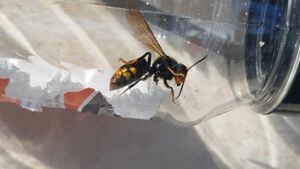
‘It’s a strategy I’m really proud of but it was only possible because when the risk was identified, it was taken seriously. The decision was made to act and that decision was backed by resources.’
Biodiversity officer Julia Henney agreed this approach would save money in the long term.
‘Up until now we’ve been quite reactive. What we’re really trying to do now is flip that on its head – and this follows best practice right across the EU and the UK – and say: “What are the problems that aren’t already here and how do we stop them from getting here?” because we know that if we can keep it from getting to our island, it will be much more successful and much more cost effective in the long run.’
'Sea vomit' is major threat
‘SEA VOMIT’ is one of the biggest threats to Guernsey’s environment, according to biodiversity officer Julia Henney.
She said the marine animal, which is officially called carpet sea squirt, was a menace to the marine environment.
‘If we think we have a hard job trying to tackle invasives on land, marine invasives are a whole other kettle of fish,’ she said.
Originating in Japan, sea vomit was first identified in the UK at Holyhead in 2008.
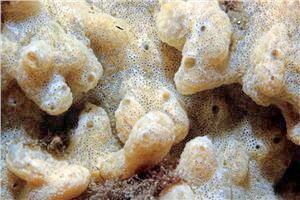
‘It’s horrible and it just spreads like wildfire,’ Miss Henney said. ‘It’s really quite big – a chunky, leathery, hard growth – and it will smother our native environment.
‘It also covers a lot of the moving infrastructure you have in a port and can physically stop the port from running.’
Referring to the impact on Holyhead, she added: ‘They spent nearly £1m. over a few years just trying to remove it to keep the port operational and in the end I think their measures weren’t successful.’
It is thought the species, which looks similar to a sponge, was probably brought into British waters in ballast tanks filled in South-East Asia, a common means by which invasive species can be spread around the globe.
However, EU legislation has banned the practice in recent years.

